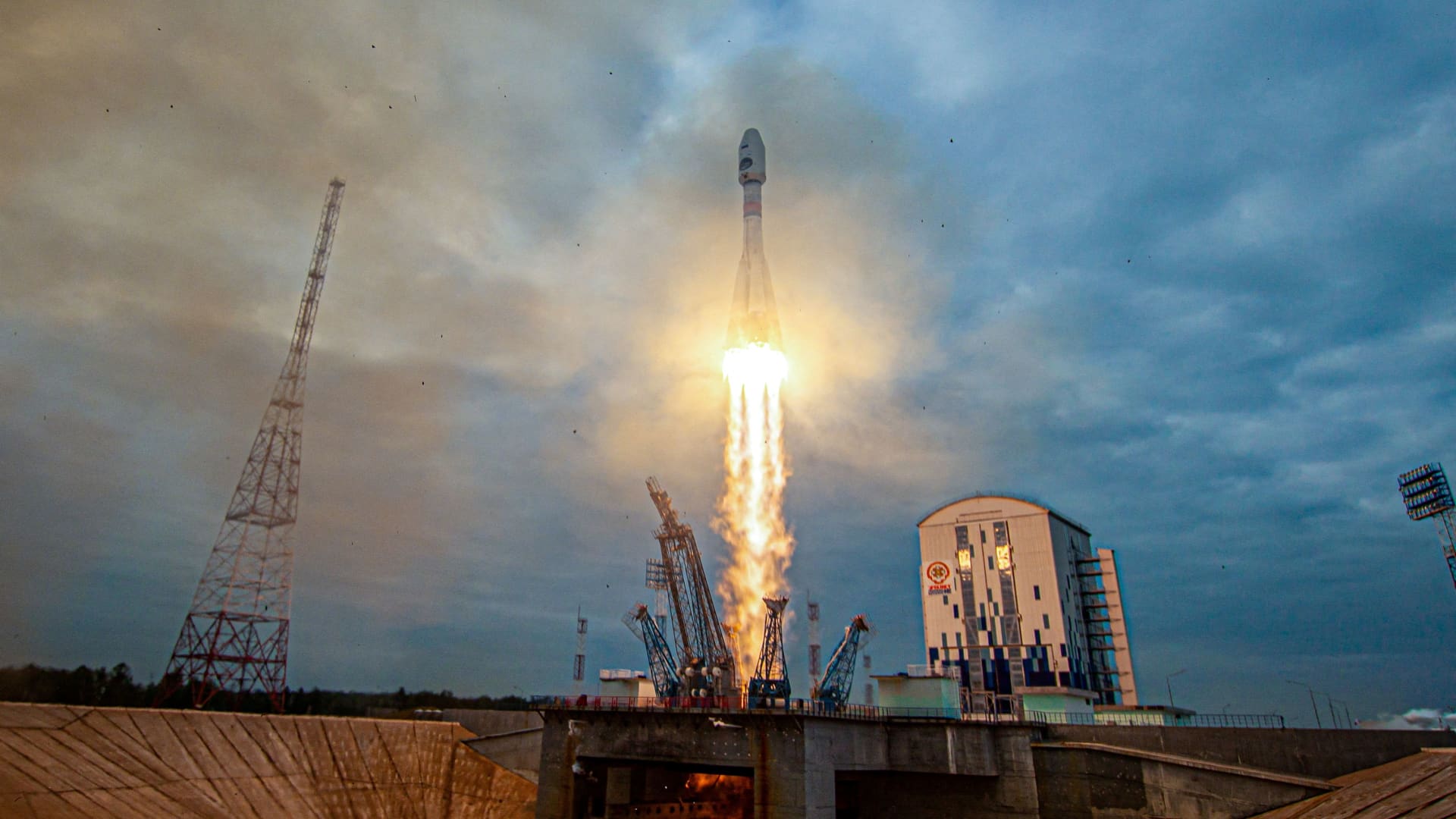
A Soyuz-2.1b rocket booster with a Fregat upper stage and the lunar landing spacecraft Luna-25 blasts off from a launchpad at the Vostochny Cosmodrome in the far eastern Amur region, Russia, Aug. 11, 2023.
Roscosmos | Via Reuters
Russia reported an “abnormal situation” Saturday on its moon-bound Luna-25 spacecraft, which launched earlier this month.
The country’s space agency, Roscosmos, said the spacecraft ran into unspecified trouble while trying to enter a pre-landing orbit, and that its specialists were analyzing the situation.
“During the operation, an abnormal situation occurred on board the automatic station, which did not allow the maneuver to be performed with the specified parameters,” Roscosmos said in a Telegram post.
Roscosmos did not specify whether the incident will prevent Luna-25 from making a landing.
The spacecraft is scheduled to land on the south pole of the moon on Monday, racing to land on Earth’s satellite ahead of an Indian spacecraft. The lunar south pole is of particular interest to scientists, who believe the permanently shadowed polar craters may contain water. The frozen water in the rocks could be transformed by future explorers into air and rocket fuel.
Also on Saturday, the Russian spacecraft produced its first results. Though Roscosmos said the information was undergoing analysis, the agency reported that the preliminary data obtained contained information about the chemical elements of the lunar soil and that its equipment had registered a “micrometeorite impact.”
Roscosmos posted images of the Zeeman crater – the third largest in the moon’s southern hemisphere – taken from the spacecraft. The crater has a diameter of 190 kilometers (118 miles) and is eight kilometers (five miles) deep.
The launch from Russia’s Vostochny spaceport in the Far East of the Luna-25 craft on Aug. 10 was Russia’s first since 1976 when it was part of the Soviet Union.
The Russian lunar lander was expected to reach the moon between Aug. 21-23, around the same time as an Indian craft that was launched on July 14.
Only three governments have managed successful moon landings: the Soviet Union, the United States and China. India and Russia are aiming to be the first to land at the moon’s south pole.
Roscosmos said it wants to show Russia “is a state capable of delivering a payload to the moon,” and “ensure Russia’s guaranteed access to the moon’s surface.”
Sanctions imposed on Russia after it invaded Ukraine make it harder for the country to access Western technology, impacting its space program. The Luna-25 was initially meant to carry a small moon rover but that idea was abandoned to reduce the weight of the craft for improved reliability, analysts say.
“Foreign electronics are lighter, domestic electronics are heavier,” Egorov said. “While scientists might have the task of studying lunar water, for Roscosmos the main task is simply to land on the moon — to recover lost Soviet expertise and learn how to perform this task in a new era.”
The spaceport is a pet project of Russian President Vladimir Putin and is key to his efforts to make Russia a space superpower and move Russian launches from the Baikonur Cosmodrome in Kazakhstan.
A previous Indian attempt to land at the moon’s south pole in 2019 ended when the lander crashed into the moon’s surface.
